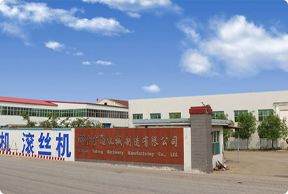
-
 Afrikaans
Afrikaans -
 Albanian
Albanian -
 Amharic
Amharic -
 Arabic
Arabic -
 Armenian
Armenian -
 Azerbaijani
Azerbaijani -
 Basque
Basque -
 Belarusian
Belarusian -
 Bengali
Bengali -
 Bosnian
Bosnian -
 Bulgarian
Bulgarian -
 Catalan
Catalan -
 Cebuano
Cebuano -
 Corsican
Corsican -
 Croatian
Croatian -
 Czech
Czech -
 Danish
Danish -
 Dutch
Dutch -
 English
English -
 Esperanto
Esperanto -
 Estonian
Estonian -
 Finnish
Finnish -
 French
French -
 Frisian
Frisian -
 Galician
Galician -
 Georgian
Georgian -
 German
German -
 Greek
Greek -
 Gujarati
Gujarati -
 Haitian Creole
Haitian Creole -
 hausa
hausa -
 hawaiian
hawaiian -
 Hebrew
Hebrew -
 Hindi
Hindi -
 Miao
Miao -
 Hungarian
Hungarian -
 Icelandic
Icelandic -
 igbo
igbo -
 Indonesian
Indonesian -
 irish
irish -
 Italian
Italian -
 Japanese
Japanese -
 Javanese
Javanese -
 Kannada
Kannada -
 kazakh
kazakh -
 Khmer
Khmer -
 Rwandese
Rwandese -
 Korean
Korean -
 Kurdish
Kurdish -
 Kyrgyz
Kyrgyz -
 Lao
Lao -
 Latin
Latin -
 Latvian
Latvian -
 Lithuanian
Lithuanian -
 Luxembourgish
Luxembourgish -
 Macedonian
Macedonian -
 Malgashi
Malgashi -
 Malay
Malay -
 Malayalam
Malayalam -
 Maltese
Maltese -
 Maori
Maori -
 Marathi
Marathi -
 Mongolian
Mongolian -
 Myanmar
Myanmar -
 Nepali
Nepali -
 Norwegian
Norwegian -
 Norwegian
Norwegian -
 Occitan
Occitan -
 Pashto
Pashto -
 Persian
Persian -
 Polish
Polish -
 Portuguese
Portuguese -
 Punjabi
Punjabi -
 Romanian
Romanian -
 Russian
Russian -
 Samoan
Samoan -
 Scottish Gaelic
Scottish Gaelic -
 Serbian
Serbian -
 Sesotho
Sesotho -
 Shona
Shona -
 Sindhi
Sindhi -
 Sinhala
Sinhala -
 Slovak
Slovak -
 Slovenian
Slovenian -
 Somali
Somali -
 Spanish
Spanish -
 Sundanese
Sundanese -
 Swahili
Swahili -
 Swedish
Swedish -
 Tagalog
Tagalog -
 Tajik
Tajik -
 Tamil
Tamil -
 Tatar
Tatar -
 Telugu
Telugu -
 Thai
Thai -
 Turkish
Turkish -
 Turkmen
Turkmen -
 Ukrainian
Ukrainian -
 Urdu
Urdu -
 Uighur
Uighur -
 Uzbek
Uzbek -
 Vietnamese
Vietnamese -
 Welsh
Welsh -
 Bantu
Bantu -
 Yiddish
Yiddish -
 Yoruba
Yoruba -
 Zulu
Zulu
Optimal Configuration for Exporting Thread Rolling Machines and Enhancing Production Efficiency
The Essential Guide to Thread Rolling Machine Setup for Exporters
In the fast-paced world of manufacturing, the efficiency and precision of production processes can significantly impact a company’s bottom line. Among various machining processes, thread rolling has emerged as one of the most effective methods for creating high-precision threaded components. For exporters involved in this sector, understanding the intricacies of setting up a thread rolling machine is crucial for ensuring product quality and meeting international standards.
What is Thread Rolling?
Thread rolling is a cold-forming process that deforms material into the shape of a thread. Unlike traditional cutting methods, thread rolling creates threads by compressing the material between two rotating dies. This process is celebrated for its efficiency, producing stronger threads due to the work-hardening effect of the material and offering a superior surface finish. It is widely used in various industries, including automotive, aerospace, and construction, making it a critical area for exporters who supply threaded components globally.
Setting Up a Thread Rolling Machine
The setup of a thread rolling machine involves several key steps that can greatly influence the final product's quality and performance
. Here’s a detailed overview of the process1. Selecting the Right Machine The first step for any exporter is to choose a thread rolling machine that suits their specific production requirements. Factors such as material type, thread specifications, and volume must be considered. Machines can vary in terms of capacity, roll configuration, and features, so understanding the specifics of your production needs is crucial.
thread rolling machine setup exporter

2. Die Selection and Installation The choice of dies is vital as they determine the thread profile and finish. Dies must be installed accurately, ensuring they are aligned properly to avoid defects during the rolling process. Regular maintenance and inspection of dies are also essential to ensure they remain sharp and effective.
3. Material Preparation The quality of the raw material directly affects the final product. Before rolling, it's important to ensure that the material is free from impurities and has the right diameter and surface condition. Proper preparation can minimize waste and improve the overall production efficiency.
4. Machine Calibration Calibration of the rolling machine is necessary to achieve precision in the threading process. This involves adjusting parameters such as speed, feed rate, and pressure to optimize performance. Exporters should conduct test runs with gauge pins to verify that the machine is operating within required tolerances.
5. Quality Control Implementing a robust quality control system is essential in the exporting process. Regular inspections during and after the thread rolling process will help identify any issues early, allowing for quick adjustments. Quality control checks should conform to international standards to meet client expectations and regulatory requirements.
6. Documentation and Compliance For exporters, adhering to documentation and compliance is imperative when shipping threaded components internationally. Proper labeling, certification of quality standards, and documentation of manufacturing processes are crucial for regulatory compliance in different countries.
Conclusion
Setting up a thread rolling machine for export requires a comprehensive understanding of both technical and operational aspects. By selecting the right machine, ensuring precision in the setup process, and maintaining stringent quality control measures, exporters can enhance their competitiveness in the global market. As industries continue to evolve, the importance of reliable and efficient production processes remains paramount, making expertise in thread rolling machine setup a valuable asset for exporters looking to thrive in a dynamic environment. With attention to detail and a commitment to quality, businesses can successfully navigate the complexities of international manufacturing and supply high-caliber threaded components worldwide.
